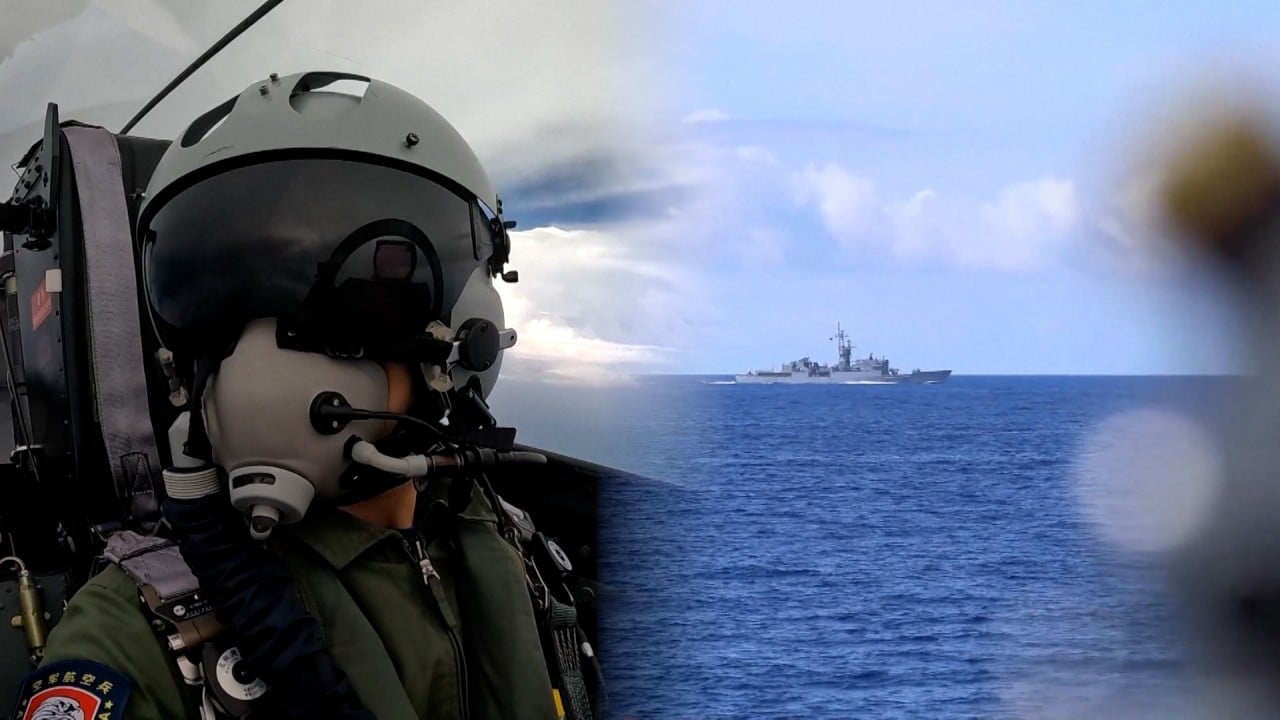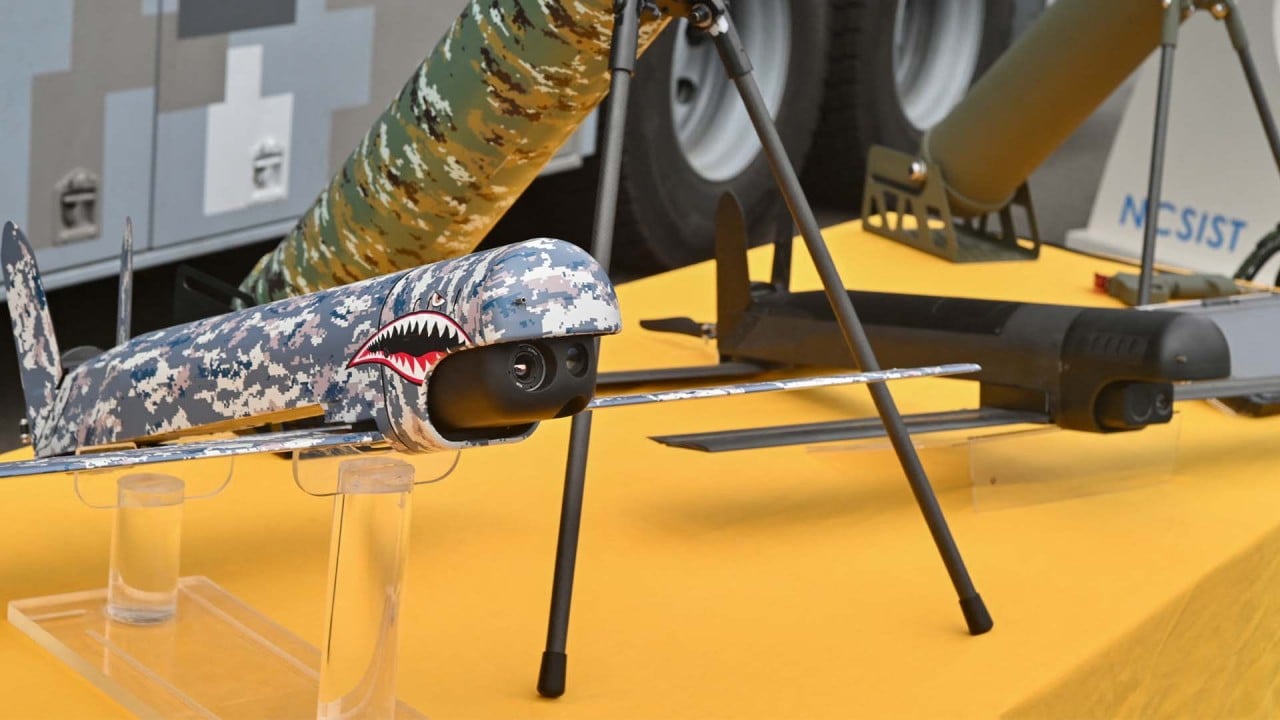
Taiwan ramps up development of anti-drone systems as PLA security threats grow
- Eight mainland Chinese drones have been identified as crossing the median line in one week, as Beijing increases the frequency of such missions
- Military experts say there is an urgent need for Taiwan to strengthen counter-drone measures to deal with a potential cross-strait conflict
One BZK-005 was reported on Tuesday by the island’s defence ministry to have looped around the eastern side of Taiwan, flying clockwise from north to south. Another BZK-005 was reported the previous day looping around the east and southeast of the island, apparently joining a PLA H-6K bomber in a mission in the West Pacific.
Last Saturday, three PLA drones crossed the median line, with a BZK-005 flying along the island’s west coast in a clockwise direction to the east and southeast coast, as a TB-001 made a similar flight. Both UAVs joined a Y-8 anti-submarine aircraft in a mission in the West Pacific before returning to the mainland on the original path.
A CH-4 combat-reconnaissance drone was spotted entering Taiwan’s southwest ADIZ on the same day, with its path overlapping that of a PLA transport plane and an early warning aircraft, according to the ministry.
Beijing views Taiwan as its territory that must be brought under its control, by force if necessary. Since last August, the PLA has intensified its military operations around Taiwan to ramp up pressure on the island after then-US House speaker Nancy Pelosi defied repeated warnings by visiting Taipei that month – a trip Beijing saw as a violation of its sovereignty.
The United States, like most countries, does not recognise Taiwan as an independent state but is opposed to any unilateral change to the cross-strait status quo.
Chang said in addition to gathering intelligence, the frequent UAV fly-bys would also greatly exhaust the island’s military which needed time and money to keep track of the drones.
Chieh Chung, a senior researcher at the National Policy Foundation, a think tank affiliated with Taiwan’s main opposition party Kuomintang, said the PLA had been using the drones to work with various types of warplanes, including bombers, fighter jets and anti-submarine aircraft, for joint combat training.

“Take last Saturday’s operation, for example. Two H-6 bombers were reported by Japan’s defence ministry to have transited the Miyako Strait en route to waters off the southeast coast of Taiwan where a Y-8 anti-submarine aircraft and the BZK-005, as well as a TB-001, were also detected,” Chieh said.
This obviously was a combat tactic training mission, with the two drones feeding information to the Y-8 and H-6, Chieh said, adding that the training was aimed at familiarising the PLA with the air paths in the region and bolster their combat readiness to prepare for a potential cross-strait war.
He said the PLA appeared to have set up some new units that were practising coordination of the drones with other forces and were testing the drones’ abilities to connect with the mainland’s BeiDou Satellite System for effective navigation.
With the PLA rapidly increasing its use of drones for various missions, military analysts in Taiwan said there is an urgent need for the island to strengthen its counter-drone measures to deal with the PLA’s mass employment of UAVs in a potential cross-strait conflict.
“While it is unlikely to shoot down the drones as it could trigger a war if they fly outside of our airspace, the [island’s] military must have sound anti-UAV systems ready to deal with the Communists’ drones,” Chieh said.
Taiwan to equip close-range spy drones with ammunition system, report says
Lin Ying-yu, a professor of international relations and strategic studies at Tamkang University in New Taipei, said soft-kill and hard-kill solutions were needed to counter the drones.
“There should be no problem for the military here to employ soft-kill solutions, including electronic jamming of the enemy’s drone or luring them away from their targets,” Lin said.
In wartime, Taiwan can also use hard-kill solutions to take down the drones, Lin said, referring to the employment of projectile weapons or other physical methods to hit the drones.
Jang Ming-ruey, secretary general of the Taiwan International Strategic Study Society, a Taipei think tank, said though the island had the ability to counter the PLA drones, what was most pressing was for it to further strengthen its anti-UAV capability.
“The defence ministry here is able to detect large and medium-sized drones through its radars and other systems, but for small drones which can fly as far as 100km per hour, it would be highly difficult for it to track them,” Jang said.
Shu Hsiao-huang, a senior analyst at the Institute for National Defence and Security Research, a government think tank in Taipei, said Taiwan’s manufacturers have the ability to develop and produce jamming systems and anti-drone radars that can be used against small and medium UAVs.
“But currently what is needed is the development of solutions to strengthen the military’s ability to counter [the PLA’s] low and mid-air flying drones,” Shu said.
To try to boost the development of the island’s own drones and counter solutions, Taiwanese President Tsai Ing-wen has set up a “national team” to research and produce military UAVs and counter-drone systems. The Tsai government has picked nine civilian companies to work with the military to develop new drones and four other firms for the development of counter-solutions.
In its annual budget for next year, the island’s defence ministry has also prepared NT$4.98 billion (US$156 million) to purchase close to 2,000 small-size drones and counter systems from local vendors.



